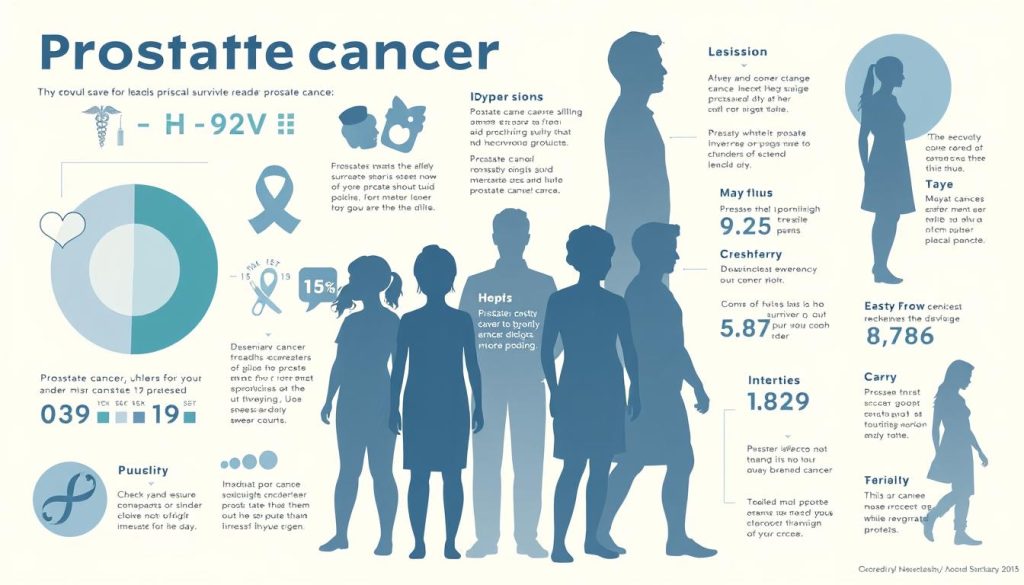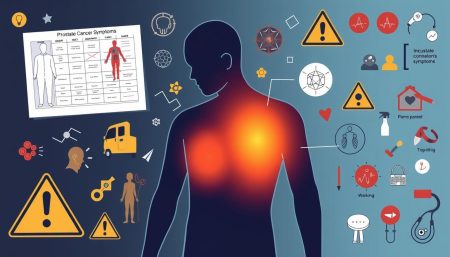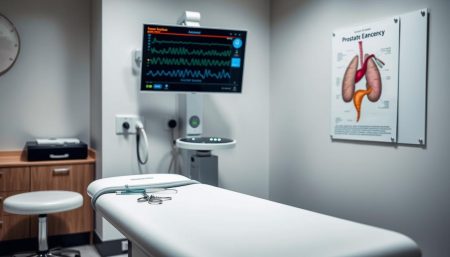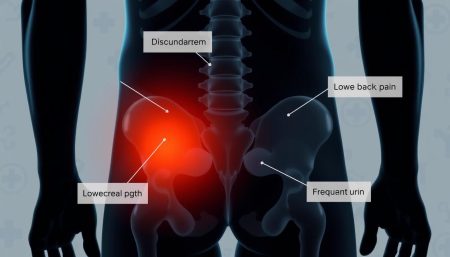Many men worry when they get a prostate cancer diagnosis. They wonder, “Is this deadly?” The answer depends on several factors. This article will help you understand the risks.
We’ll cover the basics of prostate cancer, its stages, and treatment options. Knowing these can help you understand survival chances. Early detection and proper care are key to a better prognosis. Let’s look at the facts about prostate cancer mortality together.
Understanding Prostate Cancer Basics and Its Impact
Prostate cancer is a big worry for men everywhere. It hits the prostate gland, a small part of the male body. We’ll look at what prostate cancer is, who’s at risk, and how it affects the world.
What Defines Prostate Cancer
Prostate cancer happens when prostate cells grow too much. It can grow slowly, making people wonder, is prostate cancer deadly. But, finding it early and treating it can save lives.
Common Risk Factors and Warning Signs
There are things that make prostate cancer more likely:
- Age: Risk goes up after 50
- Race: African American men are at higher risk
- Family history: Your genes matter
- Diet: Eating too much fat might raise risk
Signs include trouble peeing, blood in pee or semen, and pain in the pelvis. Many men with early prostate cancer don’t feel any symptoms.
Global Statistics and Prevalence
Prostate cancer is the second most common cancer for men worldwide. It’s more common in some places than others.
| Region | Incidence Rate (per 100,000) | Mortality Rate (per 100,000) |
|---|---|---|
| North America | 73.7 | 10.1 |
| Europe | 62.1 | 11.3 |
| Asia | 11.5 | 4.5 |
These numbers show how big of a deal prostate cancer is worldwide. They stress the need for awareness and finding it early.

Is Prostate Cancer Deadly: Examining Mortality Rates
Prostate cancer survival rates change a lot based on different factors. A study on prostate cancer deaths found some interesting facts. It followed 116,796 patients for 20 years, finding 21,896 deaths from prostate cancer.
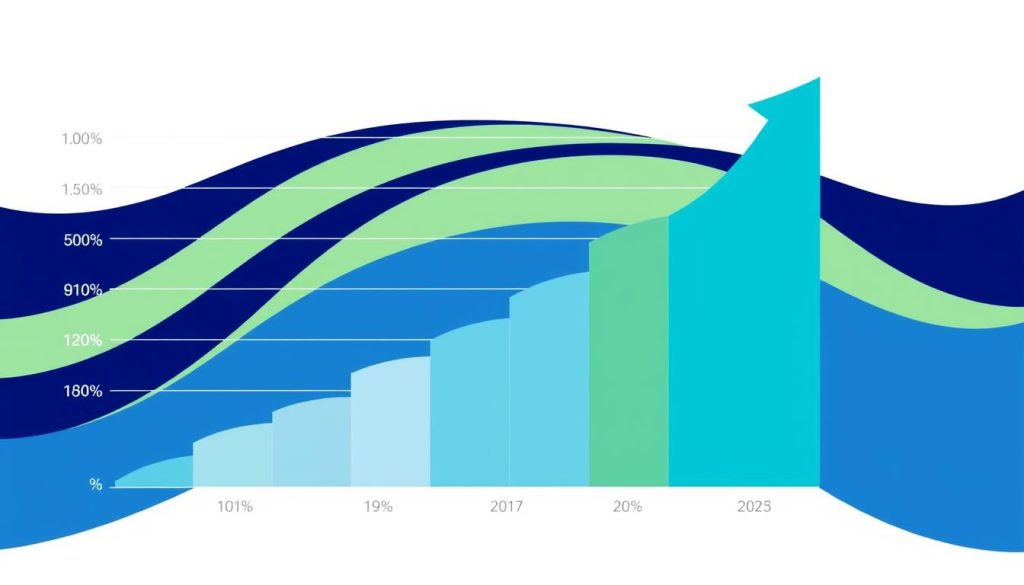
How old you are when you get diagnosed and the cancer’s grade matter a lot. Low-grade cancers might not grow for a long time but can come back later. High-grade cancers grow faster and are more aggressive. This shows why finding cancer early and treating it right is so important.
For men with prostate cancer, knowing their risk is key. Things like the cancer’s stage, age, and health affect how well they’ll do. Prostate cancer that’s advanced is usually harder to treat and has lower survival rates than early-stage cancer.
| Stage | 5-Year Survival Rate | 10-Year Survival Rate |
|---|---|---|
| Localized | Nearly 100% | 98% |
| Regional | Nearly 100% | 96% |
| Distant (Advanced) | 30% | 19% |
These numbers give a general idea, but each person’s story is different. New treatments are helping more people live longer with prostate cancer, even if it’s advanced. Getting regular check-ups and taking care of your health are important steps in the fight against this disease.
Stages of Prostate Cancer and Survival Outlook
Knowing the stages of prostate cancer is key to understanding survival chances. The cancer’s stage at diagnosis greatly affects treatment choices and how well a person might do.
Early-Stage Prostate Cancer Prognosis
Early-stage prostate cancer, which stays within the prostate, looks very promising. The 5-year survival rate for this type is over 99%. Doctors might suggest watching and waiting, surgery, or radiation therapy.
Advanced Stage Impact on Survival
As prostate cancer gets worse, survival rates drop. For cancer that has spread but not to distant areas, the 5-year survival rate is about 90%. At this stage, aggressive cancer might need stronger treatments.
Metastatic Disease Considerations
Metastatic prostate cancer, which spreads to distant organs, is the biggest challenge. The 5-year survival rate for this type is around 30%. But, new treatments are helping many patients live longer.
| Prostate Cancer Stage | 5-Year Survival Rate | Treatment Approach |
|---|---|---|
| Localized (Stage I-II) | Nearly 100% | Active surveillance, surgery, radiation |
| Locally Advanced (Stage III) | About 90% | Surgery, radiation, hormone therapy |
| Metastatic (Stage IV) | Approximately 30% | Hormone therapy, chemotherapy, targeted therapies |
While these numbers give a general idea, each person’s situation is different. Age, overall health, and the cancer’s specific traits all play a part in survival rates for all prostate cancer stages.
Treatment Options and Their Effectiveness
Prostate cancer treatments have improved, offering new hope. The right treatment depends on the cancer’s stage, the patient’s health, and their wishes.
Surgery and Radiation Therapy
Surgery and radiation are key treatments. Surgery removes the prostate gland. Radiation kills cancer cells with high-energy beams. These methods work well for early-stage cancer, boosting survival chances.
Hormone Therapy Approaches
Hormone therapy lowers testosterone to slow cancer growth. It’s best for advanced cancer. Though not a cure, it greatly improves life quality and prognosis for many.
Emerging Treatment Technologies
New treatments are changing prostate cancer care. Immunotherapy uses the body’s immune system against cancer. Targeted therapies and precision medicine offer tailored treatments. These advances promise better survival rates, especially for tough cases.
FAQ
Q: Is prostate cancer always deadly?
A: No, prostate cancer is not always deadly. Many men with it live long lives and die from other causes. The survival rates for prostate cancer are high, especially when caught early. But, the deadliness can vary based on the stage, cancer aggressiveness, and the person’s health.
Q: What are the survival rates for prostate cancer?
A: Prostate cancer survival rates are good. The 5-year survival rate for all stages is about 98%. For early-stage cancer, it’s nearly 100%. But, for advanced cancer, it drops to about 30%.
Q: What factors influence prostate cancer prognosis?
A: Several factors affect prostate cancer prognosis. These include:
• The cancer’s stage at diagnosis
• The Gleason score (a measure of cancer aggressiveness)
• PSA levels
• The patient’s age and health
• How well the cancer responds to treatment
• If the cancer has spread
Q: How does the stage of prostate cancer affect survival?
A: The cancer’s stage greatly affects survival. Early-stage cancer has a nearly 100% 5-year survival rate. But, advanced cancer’s survival rate drops to about 30%.
Q: What are the treatment options for prostate cancer?
A: There are many treatment options for prostate cancer. These include:
• Active surveillance for low-risk cases
• Surgery (radical prostatectomy)
• Radiation therapy (external beam or brachytherapy)
• Hormone therapy
• Chemotherapy
• Immunotherapy
• Targeted therapy
The right treatment depends on the cancer’s stage, the patient’s health, and personal preferences.
Q: Can aggressive prostate cancer be cured?
A: Aggressive prostate cancer can be tough to treat, but it’s not always incurable. Treatment success depends on early detection and how well it responds to therapy. New treatments and clinical trials offer hope for aggressive cases. Sometimes, the focus shifts to controlling the disease and improving quality of life.
Q: How does age affect prostate cancer survival?
A: Age impacts prostate cancer survival in different ways. Younger men often have a better prognosis due to better health and tolerance for treatments. However, younger men’s cancer can be more aggressive. Older men might face a higher risk of dying from prostate cancer but are more likely to die from other causes first.
Q: What are the warning signs of prostate cancer?
A: Early prostate cancer often has no symptoms. But, some signs include:
• Difficulty urinating or weak urine flow
• Frequent urination, especially at night
• Blood in urine or semen
• Erectile dysfunction
• Pain in the hips, back, or chest
• Weakness or numbness in the legs or feet
These symptoms can also be from non-cancerous conditions. Regular screenings are key for early detection.












